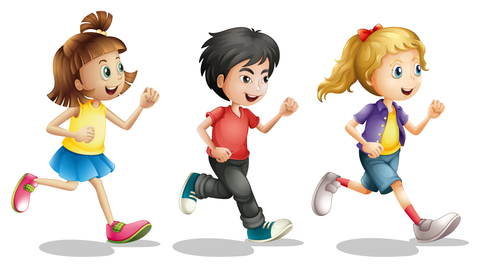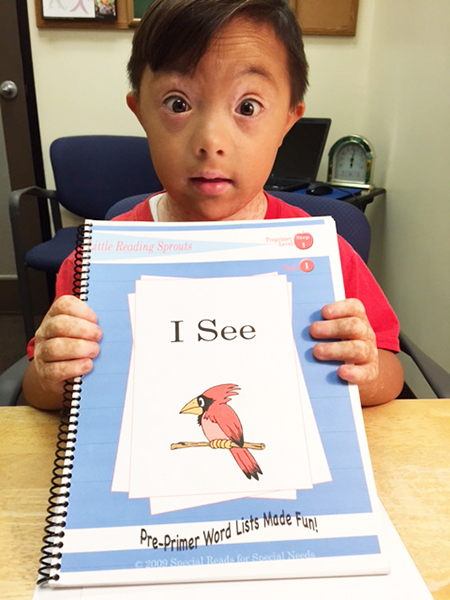HOW FAST IS FAST? FAST FLASH TIPS
 HOW FAST IS FAST? Use of “Fast Flash” is spreading…but how do you do it so the BRAIN gets it? Is there a wrong way (ineffective) and a right way (zaaap into memory)? You bet! Read on…
HOW FAST IS FAST? Use of “Fast Flash” is spreading…but how do you do it so the BRAIN gets it? Is there a wrong way (ineffective) and a right way (zaaap into memory)? You bet! Read on…
Q. Why are we doing Fast Flash?
A. The whole purpose of using Fast Flash to teach sight words (ANY sight words, high interest or high frequency) is to get the words quickly into long term memory. There is no other reason we’re using this technique.
So how are we going to do that? By practicing Fast Flash correctly. Here are a few Q&As which might serve as a wake-up call that, possibly, you might not be doing it effectively yet:
Q. How fast is fast?
A. You show and name TWO CARDS PER SECOND. That’s ideal. Work toward this ideal.
Q. Does the learner repeat the word as you flash the card?
A. Are you kidding? No.
Q. Why not?
A. In the first place, if you are flashing/naming the cards at the proper speed, there is no way on earth the child has time to repeat the word. If he has time to say the word, your speed is ‘way off. Time yourself and see if you can get it to 2 cards per second.

“I SEE” for sure! This is the ideal attitude for SEEING flash cards! Just LOOK, that’s all. (His book is the first book in my Pre-Primer book bundle.)
In the second place, ALL YOU ARE REQUIRING of the learner is that his eyes are on the card, and that therefore his brain is on the card. We do not want him making any effort in the speech and articulation department! No effort. Just attending with his eyes. The brain will do the rest for him.
Q. What’s the deal? How is this speed going to help him learn the word?
A. What we want to do is wake up the right hemisphere of the brain, which controls—among other things—long term memory storage. The right brain loves speed. Speed alerts it to snap to attention. Go slow with flash cards, and the right hemisphere slumbers on…go fast, and wham! It’s alert and awake and grabbing the information. This handy fact was discovered through research long ago. For those who want to dive deeper, explore www.rightbraineducationlibrary.com (join for free and get a free manual on the topic). Fascinating. So that is the WHY of what we are doing with this technique. The HOW is also important.
Q. So what’s the HOW?
A. The “how” has to do not only with speed but size: the flash cards should be large, with large type.
Q. How large does the type need to be?
A. It all depends. (You knew that was coming!) But specifically, for a toddler, lowercase letters 2 “ high. Red type because the brain will be attracted to it more than to black. Even if an emergent reader is older, even early teens, the 2” high letters on large flash cards will boost the learning process. Emergent reader = underdeveloped visual pathway, no matter what the age. The ability to read a large “Pizza” sign on a storefront does not equal the ability to recognize and process tiny black squiggles on a page. The latter requires a mature visual pathway. We get that process started with LARGE type. We gradually reduce the type size on our cards and eventually shift to black ink—once our learner is rocking along nicely.
Q. When can we use small black type on our flash cards and in our created books and materials?
A. You will naturally see a developing ability to recognize smaller and smaller type as the learner’s reading proficiency develops. If you have any doubt that you’re going too small too fast, give your young reader a choice: make a card with the identical word/phrase in both large font and small, and see which one she chooses. For personal books/texts, keep the font size between 32 and 150 point, depending on the advancement of the reader.
Q. How many cards do I show at one time?
A. We usually show cards in groups of 5 words (NOT in “word families”, heaven forbid. We are after high interest words in the beginning—words that relate directly to the learner’s life. Forget word families at this point.) Why 5? Because that is usually a comfortable amount of data for our learners to hold in working memory; 5 working memory channels is fairly typical for our learners with delays. We show one group of cards 3 times rapidly in succession. Then we can repeat that process with a second group, and a third, etc., depending on the learner’s progress. Key word: HIGH INTEREST words in the beginning of the reading journey.
Q. Can you show me what fast flash looks like at the proper speed?
A. Sure. Here’s a new video taken with one of my students.
Any more questions? Leave questions as a comment on FB or this site.
Dashing at top speed,

I was very pleased to find this web-site.I wanted to thanks for your time for this wonderful read!! I definitely enjoying every little bit of it and I have you bookmarked to check out new stuff you blog post.
You’re very welcome, Napoleon! It looks as if you live in Poland, yes? How wonderful to be in communication across the globe. All the best, Natalie
Wow!! Didn’t realize it was supposed to be that fast!!
At least that fast! In my opinion, I was a bit slow! Take a look at http://www.rightbraineducationlibrary.com for a quick look at REALLY fast flash card samples.
Hi! I just found your sight and am so excited to read your posts and make some sight word cards. My daughter is 2.5. Do you recommend any specific sight words to start with? Maybe some she can already sign? Thanks!
Hi, Jamie-
The absolute first words you want to teach her will come from her very first personal book. How to make them? Use the search box on my blog page and search for “personal books”. I’ve written detailed articles on how to do it. For your daughter at her age, her first personal book might be built on her favorite person; e.g., 3-word sentences like “I love Mommy.” “I love Daddy.” “Mommy loves me.” “Daddy loves me.” You’ll create flash cards for just those words, so you will have a total of 5 cards. I, love, Mommy, Daddy, me.That’s perfect for a 2.5 year old. Please read all my blogs about how to create large flash cards and do Fast Flash. I can absolutely guarantee that she will love the book and the words!